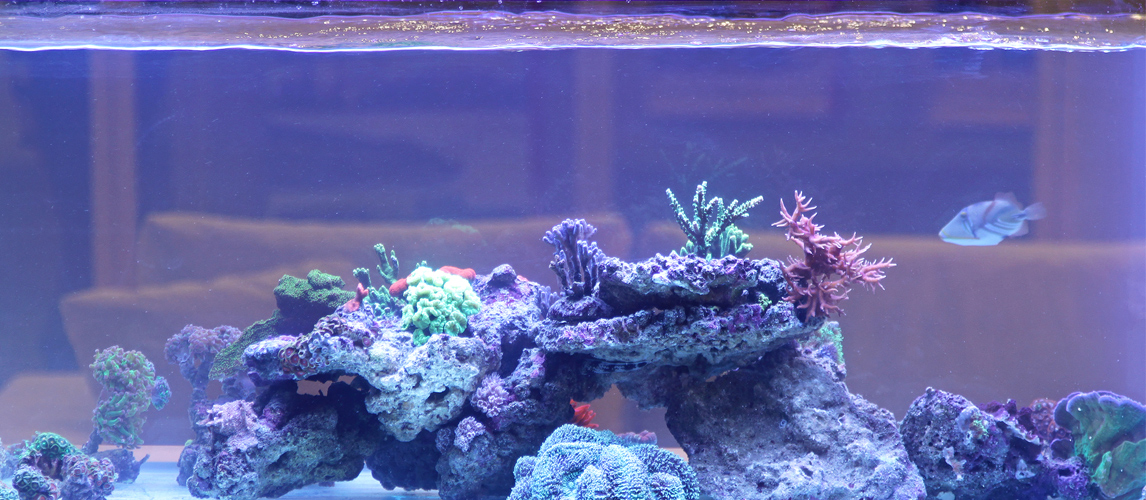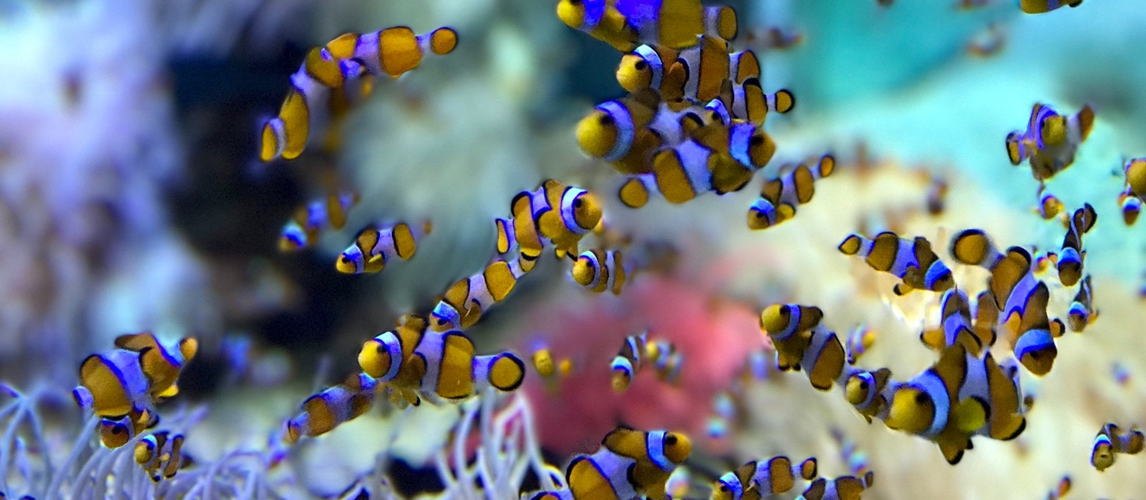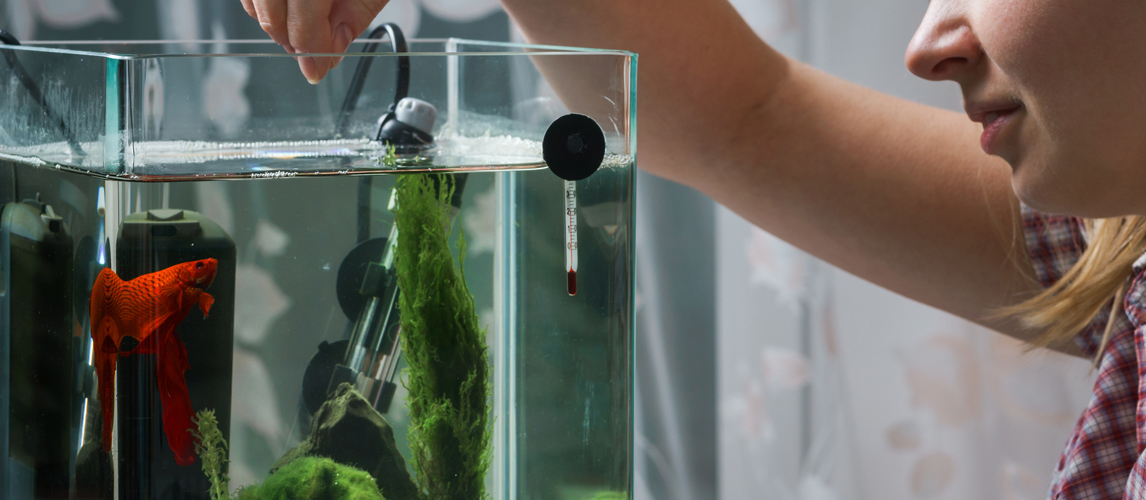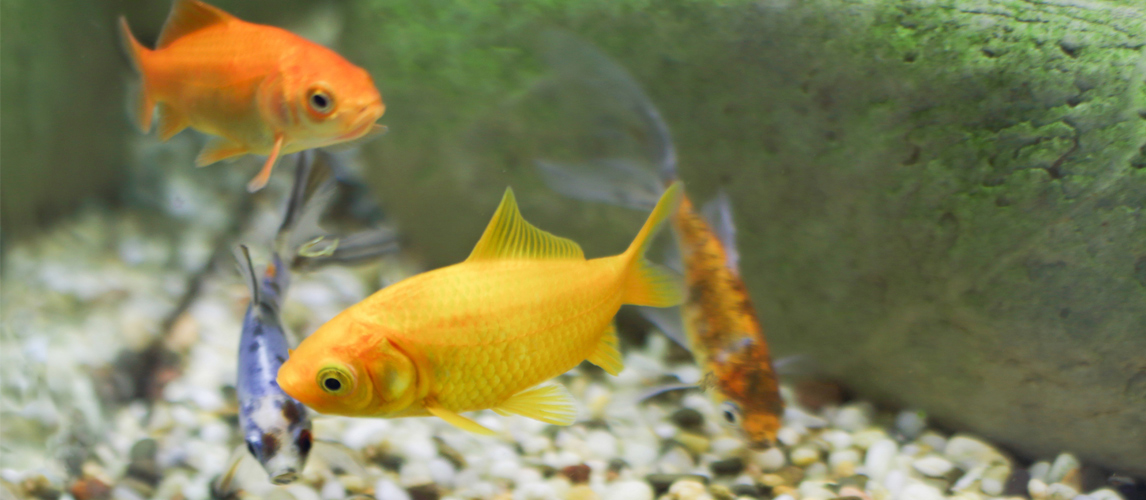Betta fish are a very famous and popular fish due to their beauty and intelligence. Some owners have even managed to teach them a few tricks. They may be one of the most interesting fish you can get, but, as with all interesting pets, this can mean they are more demanding than your other fish. Don’t worry though, when armed with the right information, their needs are very manageable, but to help get you started, here is our complete beginner’s guide to caring for betta fish.
Betta Fish Information
The first step to happy betta fish care is understanding them. To help you get to know your new family member at a glace, here is a quick list of betta fish facts:
- Betta fish grow to approximately 3 inches, including their tail.
- They should have a life span of 3 years, but healthy fish have been known to live 4 or more years.
- They are carnivores.
- Male betta fish are aggressive with other male betta fish. This means you cannot own more than one in a tank. They can share a tank with other non-aggressive fish.
- This aggression means they are also commonly known as ‘Siamese fighting fish’.
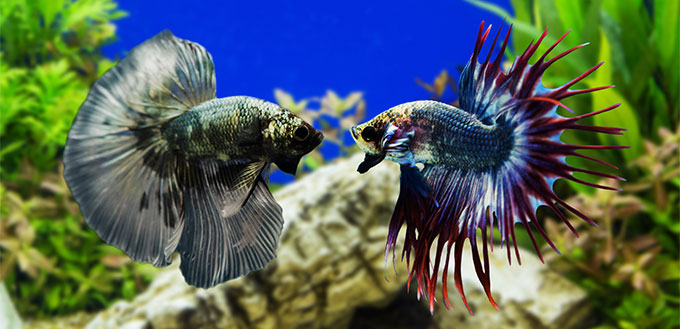
Betta Fish Behavior
What makes betta fish so desirable, other than their beauty, is their interesting behavior. Three such behaviors include their aggression, their intelligence and their breathing.
- Aggression
As fighting fish, they are aggressive and will fight other male betta fish. This interaction is, obviously, not to be encouraged. It would not be responsible to put two male bettas in the same tank. However, you may still see them flare their fins when they are threatened or disturbed.
- Intelligence
Due to their intelligence, betta fish can actually be trained. This means you can play with them, and encourage a healthy amount of exercise. You can start with training them to follow your finger and flare on command, but with a lot of practice, you may even be able to get them to do one of their best tricks on command – jumping.
- Breathing
Betta fish are also fascinating as they are labyrinth fish. This means they can breath in both water and air. You may see them come to the surface to breathe, so ensure they have enough space at the top of the tank. This trait also means they have a higher tolerance for poor water quality, but this doesn’t mean you can shirk your cleaning duties!
Related Post: Best Aquariums
Betta Fish Habitat
Before you get your betta fish, you need to make sure you can supply it with a suitable habitat. It is always a good idea to start by asking the specialist at the store where you are buying your betta fish – they may have some insights that could help you. You will also need to buy these supplies at the pet shop:
- A habitat that is at least five-gallons and a lid that allows for airflow
- A thermometer
- An optional water filter as beta fish do not tend to enjoy much of a current, but your other fish may need it.
- Optional decorations for the habitat
- Food for your betta fish
Once you have all the parts ready, you will need to set them all up and fill the tank with water to create a nice home for your new fish. A step-by-step guide for setting up a betta fish tank, includes:
- Rinse all decorations with warm water. This will clean them from any impurities that could affect the quality of water in the tank.
- Put the tank in a location without extreme temperature variables. This means they should be out of the sunlight, away from radiators, air conditioners and vents.
- Set up the decorations, filter, and thermometer in the tank. The thermometer should be used to ensure that the water temperature never goes below 77 degrees or above 82 degrees. This is the optimal temperature for a betta fish to thrive.
- Fill the tank with water. This cannot be tap water because it contains elements, such as chlorine, that may kill your betta fish. You can use bottle water, or you can buy special betta fish water. You can use tap water if you treat it before you use it. You should use Novaqua, Amquel and aquarium salt, which is not the same as table salt. Seek advice on conditioning tap water when you buy the fish if you want to make sure you are doing the right thing for treating the water in your area.
- Add the lid. This is particularly important for betta fish due to their ability to jump.
Once their environment is ready, you can’t just move your fish in straight away. All fish are very sensitive to sudden temperature changes. You have to prepare them for the move into their new home. The best way to do this is to:
- Put them into a smaller container next to the tank along with half the water that they came with. Make sure this container has a lid with holes for airflow – you don’t want your fish trying to jump out!
- As this container shares the same environmental conditions as the new tank, the water should slowly adjust to become similar to that inside the tank. This should take half an hour, but if you have a second thermometer, you can wait until the two environments are displaying the same temperature.
- Then you should add some water from the main tank into the smaller tank. The amount should essentially double the volume currently in the smaller container. This helps the fish to adjust to mineral differences. This should take another 20 minutes.
- Finally, you can use a net to remove your betta fish from the container and add them to their brand new home.
Your beta fish’s habitat must be be checked daily to ensure it is running smoothly. This means checking the filter, the temperature and any other ingredients. Once a week you must check the water quality and do a water change of at least 10%. You do this by removing approximately 10%-25% of the water, and replacing it with fresh, treated water. Never change all their water at once as the sudden change in temperature could be fatal.
Betta Fish Diet
Feeding your betta fish may be a new experience for you if you have never had a carnivorous fish before. When you are used to flaky fish food, it can feel a bit odd adding protein to the tank, but it is perfectly nutritious. As with most animals, a varied diet is best and may include:
- Betta fish flakes
- Betta fish pellets
- Freeze-dried bloodworms
- Freeze-dried brine shrimp
- Freeze-dried black worms
- Frozen food
- Live Insects
It is best to consult with the previous carer of the fish and your local pet store about what to feed your betta fish as they will know what the fish most enjoyed and thrived on. Our advice is to give your betta fish a combination of pellets and insects. Approximately 2 to 6 betta fish pellets a day supplemented with an insect once a week should be sufficient.
If you have never given a fish protein or frozen food before, you should make sure you know what you are doing as it can differ from simple pellets or flakes. Frozen food, for example, must be thawed before you feed it to your fish. Live insects must be carefully rinsed first, to prevent water contamination. It is not a good idea to use live insects if your environment has gravel at the bottom as the insects can hide and may later attack fish or die and rot.
Your betta fish does not need a lot of food. A good test to ensure you are not over feeding your betta is to time how long it takes to eat. If it is taking longer than 1 or 2 minutes for them to finish their food, you have given them too much. You also want to avoid leaving food to rot in the water as this can cause health problems.
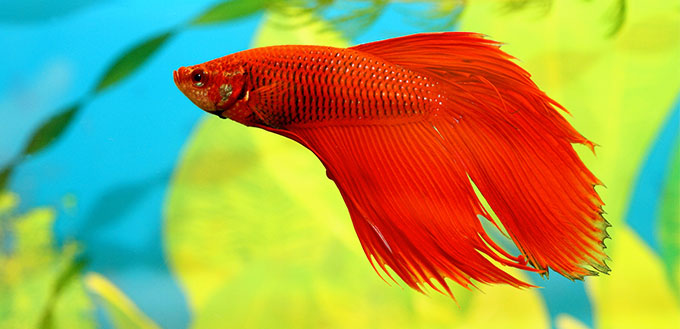
Betta Fish Common Health Problems
This leads us to our final section – preventative care for betta fish. You want your fish to live as long as possible, and if you are planning to train your betta fish, you can only do so if they are healthy. By knowing the health issues that your betta fish is most prone to, you can hopefully avoid them, allowing them to live a long and happy life.
- Fin rot
If their fins appear frayed and starts to turn red at the base, they may be suffering from fin rot caused by poor water quality. You should call your vet as soon as possible and re-evaluate your cleaning practices.
- Fungus
White, cottony growths or a discoloration of their eyes could be symptoms of a fungus problem. You must quarantine a fish that is showing these symptoms and buy a commercial antifungal treatment suitable for beta fish.
- Bacterial infections
Bacterial infections usually show up as cloudy eyes or reddened skin. You may also see an obvious wound or sore that is the source of the infection. You should use a commercial antibacterial treatment and review your cleaning practices.
- Ich
A common parasite that appears as white spots on your fish, ich may also cause your fish to rub themselves against objects due to itchiness and suffer from rapid breathing. You should quarantine a fish with ich and use a commercial ich treatment.
It can be easy to confuse symptoms so if you are worried about your fish, or want more advice before relying on a commercial treatment, it is always a good idea to get your vet’s opinion. They can also help you find the cause of the problem to prevent it happening again.
Sources:
- Melanie Radzicki McManus, 5 Things Everyone Gets Wrong About Betta Fish, HowStuffWorks
- Michelle A. Rivera, The Natural Habitat of Betta Fish, The Nest


